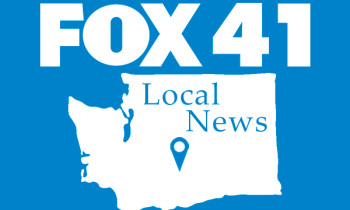
The US Federal Reserve shrugged off concerns about the economic impact of Donald Trump’s election victory and moved ahead with a quarter point cut Thursday.
The Fed sits just a short walk from the White House, where Democratic President Joe Biden will in January hand back the keys to Trump following the Republican’s election win.
But as expected, policymakers did their best to ignore the political drama playing out up the road, voting unanimously to trim interest rates by 25 basis points to between 4.50 and 4.75 percent, according to a Fed statement.
“In the near term, the election will have no effects on our policy decisions,” Fed Chair Jerome Powell told reporters after the rate cut was announced, noting there was still uncertainty about what President-elect Trump’s actual economic agenda would be.
“We don’t guess, we don’t speculate, and we don’t assume,” he said.
Powell also insisted he would not resign if asked to leave early by the president-elect, adding that firing any of the Fed’s seven governors was “not permitted under the law.”
The US central bank’s rate decision should help ease the costs of mortgages and other loans — welcome news for consumers, who had widely cited the cost of living as a top concern ahead of Tuesday’s vote.
But the cost of borrowing will also depend on how financial markets think a Trump victory will impact the economy over the longer term, and where the Fed’s interest rates will need to settle to ensure inflation remains under control.
Powell “stayed clear of commenting on the election outcome,” Nationwide chief economist Kathy Bostjancic told AFP on Thursday. “But I do think as we get into 2025 they are going to have to consider that.”
– ‘Economy looks quite resilient’ –
Polls and surveys indicate that Trump’s victory was aided by unhappiness over a post-pandemic surge in US inflation — which saw consumer prices rise more than 20 percent.
Thursday’s decision adds to a previous rate cut in September, when the Fed kicked off its easing cycle with a larger half point decrease, and penciled in additional rate reductions this year.
The Fed’s favored inflation gauge has since eased to 2.1 percent in September, while economic growth has remained robust.
The labor market has also stayed strong overall, despite a sharp hiring slowdown last month attributed in large part to adverse weather conditions and a labor strike.
“Generally speaking, the US economy looks quite resilient, and the labor market still looks very good,” Jim Bullard, the long-serving former St Louis Fed president, told AFP in an interview ahead of Election Day.
Bullard, now dean of the Daniels School of Business at Purdue University, predicted a 25 basis point cut this week, and another cut of a similar size in December.
– Fiscal discipline ‘broken down’ –
With a Trump victory assured, a lot still depends on whether Republicans can hold onto the House of Representatives, as they appear on track to do — giving them a “Red Sweep” of both houses of Congress along with the White House.
“Markets tend to like divided government as a way to control spending and keep deficits down,” said Bullard.
“What’s distressing to an economist like me is that, really, fiscal discipline has broken down for both political parties,” he said.
Trump’s victory also raises questions about the independence of the Fed.
The president-elect has repeatedly accused Powell — whom he first appointed to run the US central bank — of working to favor the Democrats, and has suggested he would look to replace him once his term expires in 2026.
Republicans are now in control of the US Senate, which votes on nominations to the Fed, giving Trump significant control over who the next head of the US central bank will be.
Trump has also said he would like “at least” a say over setting the Fed’s interest rate — something that runs against the bank’s dual mandate to act independently of Congress and the White House to tackle inflation and unemployment.
da/bjt



